 W
WThe 1945 Japan–Washington flight was a record-breaking air voyage made by three specially modified Boeing B-29 Superfortresses on September 18–19, 1945, from the northern Japanese island of Hokkaidō to Chicago in the Midwestern United States, continuing to Washington, D.C. The flight was made by three United States Army Air Forces (USAAF) generals and other airmen returning to the United States from their overseas duty after World War II. At that date, it involved the heaviest load carried by an American aircraft, the longest nonstop flight made by the USAAF, and the first nonstop flight from Japan to the United States made with a complete aircraft. However the flight did not break the then-world distance record established by the Royal Air Force in 1938. It is worth noting that the Martin PB2M was rated at 144,000 lb much earlier. Also, the tests of the B-29 under the leadership of E.H. Rowley in June, 1945 with Grand Slam bombs may have been run at similar loads.
 W
WAfrica Partnership Station is an international initiative developed by United States Naval Forces Europe-Africa, which works cooperatively with U.S. and international partners to improve maritime safety and security in Africa as part of US Africa Command's Security Cooperation program.
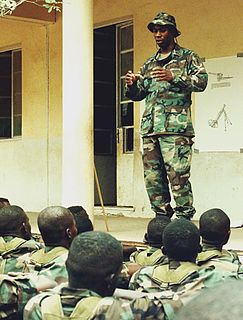 W
WThe African Contingency Operations Training and Assistance (ACOTA) program, formerly the African Crisis Response Initiative (ACRI), is a United States program to train military trainers and equip African national militaries to conduct peace support operations and humanitarian relief.
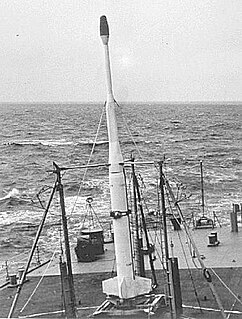 W
WOperation Argus was a series of United States low-yield, high-atmosphere nuclear weapons tests and missile tests "secretly" conducted from 27 August to 9 September 1958 over the South Atlantic Ocean. The tests were performed by the Defense Nuclear Agency.
 W
WThe Berlin Blockade was one of the first major international crises of the Cold War. During the multinational occupation of post–World War II Germany, the Soviet Union blocked the Western Allies' railway, road, and canal access to the sectors of Berlin under Western control. The Soviets offered to drop the blockade if the Western Allies withdrew the newly introduced Deutsche Mark from West Berlin.
 W
WOperation Big Itch was a U.S. entomological warfare field test using uninfected fleas to determine their coverage and survivability as a vector for biological agents. The tests were conducted at Dugway Proving Ground in 1954.
 W
WThe Bird of Paradise was a military airplane used by the United States Army Air Corps in 1927 to experiment with the application of radio beacon aids in air navigation. On June 28–29, 1927, the Bird of Paradise, crewed by 1st Lt. Lester J. Maitland and 1st Lt. Albert F. Hegenberger, completed the first flight over the Pacific Ocean from the mainland, California, to Hawaii. For this feat the crew received the Mackay Trophy.
 W
WOperation Blacklist Forty was the codename for the United States occupation of Korea between 1945 and 1948. Following the end of World War II, U.S. forces landed within the present-day South Korea to accept the surrender of the Japanese, and help create an independent and unified Korean government with the help of the Soviet Union, which occupied the present-day North Korea. However, when this effort proved unsuccessful, the United States and the Soviet Union both established their own friendly governments, resulting in the current division of the Korean Peninsula.
 W
WOperation CHASE was a United States Department of Defense program for the disposal of unwanted munitions at sea from May 1964 until the early 1970s. Munitions were loaded onto ships to be scuttled once they were at least 250 miles offshore. While most of the sinkings involved conventional weapons, four of them involved chemical weapons. The disposal site for the chemical weapons was a three-mile (5 km) area of the Atlantic Ocean between the coast of the U.S. state of Florida and the Bahamas. The CHASE program was preceded by the United States Army disposal of 8000 tons of mustard and lewisite chemical warfare gas aboard the scuttled SS William C. Ralston in April 1958. These ships were sunk by having Explosive Ordnance Demolition (EOD) teams open seacocks on the ship after they arrived at the disposal site. The typical Liberty ship sank about three hours after the seacocks were opened.
 W
WOperation Christmas Drop is a tradition that started in 1952 that serves as a training mission for the U.S. Air Force. It has since become the longest-running U.S. Department of Defense mission in full operation, and the longest-running humanitarian airlift in the world. Supported by the local communities of Guam, it is primarily conducted from Andersen Air Force Base and Yokota Air Base, and targets Micronesia.
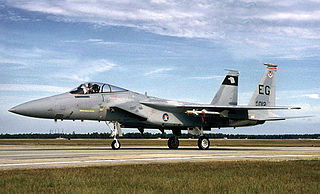 W
WOperation Coronet Nighthawk (1990–2001) was one of many operations that took place in the early 1990s to stop the drugs coming into the United States from Central and South America. The idea of the operation was to have a rotational deployment operation to intercept possible drug trafficking aircraft and to control territories where drug traffickers would not be able to smuggle more. The operation was based out of Howard Air Force Base in Panama and was moved all over the Caribbean and Central America. The Commander-in-Chief and US Atlantic Command oversaw this operation and under the guidance of Joint Interagency Task Force East (JITF-E) division, stood alert 24/7 in case the need to identify an unknown aircraft came up. Operation Coronet Nighthawk is credited with over 33,000 metric tons of cocaine being disrupted or seized since 1994. This operation is no longer in use anymore since 2001, but the title was used again in a different operation that took place in Europe soon after it fell apart and incorporated the new stealth jets known as the Nighthawks thus why the name Nighthawk was used again.
 W
WOperation Desert Thunder was a response to threats by Iraq's president Saddam Hussein to shoot down U-2 spy planes, and violate the no-fly zone set up over his country. The operation was designed to bring stability to the region by bringing in a military presence during the negotiations between Iraq and the UN over weapons of mass destruction. The name Operation Desert Thunder has been applied to the build-up of forces in the Persian Gulf region during 1998.
 W
WOperation Eastern Exit was the codename given to the military evacuation of the United States embassy in Mogadishu, the capital of Somalia, in January 1991. In late December 1990, violence quickly enveloped the city as armed militants began clashing with government soldiers. On 1 January 1991, the US Ambassador to Somalia, James Keough Bishop, contacted the Department of State requesting an evacuation of the embassy, which was approved the following day. United States Central Command began planning and mobilizing forces that evening. The initial plan was to evacuate with a military transport plane through the Mogadishu International Airport, but this was later abandoned. A helicopter evacuation via the USS Guam and USS Trenton was the remaining option.
 W
WBorder support operations, formerly known as Operation Faithful Patriot, are currently being conducted as a domestic deployment and civil contingency operation of the United States Armed Forces at the Mexico–United States border. According to the United States Northern Command, the operation is being conducted in order to prevent a potential border crossing of migrants from Central America. The existing National Guard Operation Guardian Support is also being reinforced.
 W
WOperation Fiery Vigil was the emergency evacuation of all non-essential military and U.S. Department of Defense civilian personnel and their dependents from Clark Air Base and U.S. Naval Base Subic Bay during the June 1991 eruption of Mount Pinatubo in the Philippines.
 W
WThe Georgia Sustainment and Stability Operations Program (GSSOP) was a security assistance program designed to create an increased capability in the Georgian military to support Operation Iraqi Freedom stability missions. Launched in January 2005, GSSOP was also designed to help solidify the progress made during the Georgia Train and Equip Program (GTEP) of 2002–2004 and continue to assist in the implementation of western standards in the Georgian armed forces.
 W
WThe Georgia Train and Equip Program (GTEP) was an American-sponsored 18-month, $64-million program aimed at increasing the capabilities of the Georgian armed forces by training and equipping four 600-man battalions with light weapons, vehicles and communications. The program enabled the US to expedite funding for the Georgian military for Operation Enduring Freedom.
 W
WOperation Halyard, known in Serbian as Operation Air Bridge, was an Allied airlift operation behind Axis lines during World War II. In July 1944, the Office of Strategic Services (OSS) drew up plans to send a team to the Chetniks force led by General Draža Mihailović in the German-occupied Territory of the Military Commander in Serbia for the purpose of evacuating Allied airmen shot down over that area. This team, known as the Halyard team, was commanded by Lieutenant George Musulin, along with Master Sergeant Michael Rajacich, and Specialist Arthur Jibilian, the radio operator. The team was detailed to the United States Fifteenth Air Force and designated as the 1st Air Crew Rescue Unit. It was the largest rescue operation of American Airmen in history. According to historian Professor Jozo Tomasevich, a report submitted to the OSS showed that 417 Allied airmen who had been downed over occupied Yugoslavia were rescued by Mihailović's Chetniks, and airlifted out by the Fifteenth Air Force. According to Lt. Cmdr. Richard M. Kelly (OSS) grand total of 432 U.S. and 80 Allied personnel were airlifted during the Halyard Mission.
 W
WProject Handclasp is a humanitarian program of the United States Navy, started in 1962, that distributes materials and medical help. It serves as a public relations program for U.S. Navy personnel in foreign countries and more broadly as a counterinsurgency organization; all branches of the U.S. military have a "civic action" program for this purpose.
 W
WHave Doughnut was the name of a Defense Intelligence Agency project whose purpose was to evaluate and exploit a MiG-21 "Fishbed-E" that the United States Air Force acquired in 1967 from Israel. Israel acquired the aircraft as the result of its Operation Diamond when, on August 16, 1966, Iraqi Air Force pilot Capt. Munir Redfa, in a defection pre-arranged by the Israeli Mossad Intelligence Agency, flew it to Israel during a training flight.
 W
WThe interception of the Rex was a training exercise and military aviation achievement of the United States Army Air Corps prior to World War II. The tracking and location of an ocean-going vessel by B-17 Flying Fortresses on 12 May 1938 was a major event in the development of a doctrine that led to a United States Air Force independent of the Army. The mission was ostensibly a training exercise for coastal defense of the United States, but was conceived by planners to be a well-publicized demonstration of the capabilities of "heavy bombers (as) long range instruments of power".
 W
WOperation Ivy Bells was a joint United States Navy, Central Intelligence Agency (CIA), and National Security Agency (NSA) mission whose objective was to place wire taps on Soviet underwater communication lines during the Cold War.
 W
WOperation LAC was a United States Army Chemical Corps operation which dispersed microscopic zinc cadmium sulfide (ZnCdS) particles over much of the United States and Canada in order to test dispersal patterns and the geographic range of chemical or biological weapons.
 W
WOperation Magic Carpet was the post-World War II operation by the War Shipping Administration to repatriate over eight million American military personnel from the European, Pacific, and Asian theaters. Hundreds of Liberty ships, Victory ships, and troop transports began repatriating soldiers from Europe in June 1945. Beginning in October 1945, over 370 navy ships were used for repatriation duties in the Pacific. Warships, such as aircraft carriers, battleships, hospital ships, and large numbers of assault transports were used. The European phase of Operation Magic Carpet concluded in February 1946 while the Pacific phase continued until September 1946.
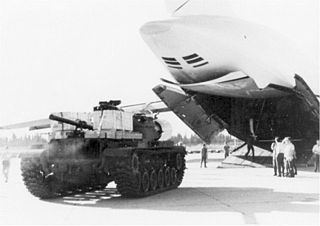 W
WOperation Nickel Grass was a strategic airlift operation conducted by the United States to deliver weapons and supplies to Israel during the 1973 Yom Kippur War. In a series of events that took place over 32 days, the U.S. Air Force's Military Airlift Command shipped 22,325 tons of tanks, artillery, ammunition, and supplies in C-141 Starlifter and C-5 Galaxy transport aircraft between 14 October and 14 November 1973. The U.S. support helped ensure that Israel survived a coordinated and surprise attack from the Soviet-backed Arab Republic of Egypt and Syrian Arab Republic.
 W
WFollowing the Yom Kippur War between Egypt and Israel in 1973, an international agreement was reached in October 1973 to provide measures to reopen the Suez Canal. The U.S.-led clearing effort undertaken in 1974 consisted of three operations. The sweeping of mines in the Suez Canal by naval units from the United States, the United Kingdom and France, the provision of training and advisory assistance for land and water explosive ordnance clearance for Egyptian forces and the removal and salvage of wrecks from the Canal.
 W
WNoble Resolve is a United States Joint Forces Command (USJFCOM) experimentation campaign plan to enhance homeland defense and improve military support to civil authorities in advance of and following natural and man-made disasters.
 W
WOperation Warp Speed is a public–private partnership, initiated by the Trump administration, to facilitate and accelerate the development, manufacturing, and distribution of COVID-19 vaccines, therapeutics, and diagnostics. Operation Warp Speed was introduced in early April 2020, after a round-table meeting with Trump, Pence and industry executives at the White House on March 2. It will promote mass production of multiple vaccines based on preliminary evidence allowing for faster distribution if clinical trials confirm one of the vaccines is safe and effective. The plan anticipates that some of these vaccines will not prove safe or effective, making the program more costly than typical vaccine development, but potentially leading to the availability of a viable vaccine several months earlier than typical timelines. Congress allocated on March 27 nearly $10 billion for Operation Warp Speed through the Coronavirus Aid, Relief, and Economic Security (CARES) Act, with $6.5 billion designated by Congress for countermeasure development through BARDA, along with $3 billion for NIH research.
 W
WProject 112 was a biological and chemical weapon experimentation project conducted by the United States Department of Defense from 1962 to 1973.
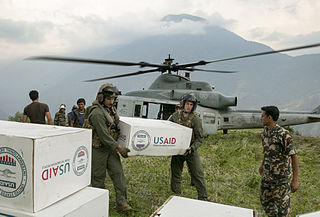 W
WOperation Sahayogi Haat was a US military relief operation delivering humanitarian assistance to victims of the April and May 2015 Nepal earthquakes. About 900 US military and civilian personnel were involved, with about 300 deployed in Nepal. Joint Task Force 505 was responsible for managing the relief operation, which lasted from May 6 to 26, 2015.
 W
WOperation Sandblast was the code name for the first submerged circumnavigation of the world, executed by the United States Navy nuclear-powered radar picket submarine USS Triton (SSRN-586) in 1960 under the command of Captain Edward L. Beach Jr.. The New York Times described Triton's submerged circumnavigation of the Earth as "a triumph of human prowess and engineering skill, a feat which the United States Navy can rank as one of its bright victories in man's ultimate conquest of the seas."
 W
WOperation Sea Orbit was the 1964 around-the-world cruise of the United States Navy's Task Force One, consisting of USS Enterprise (CVAN-65), USS Long Beach (CGN-9), and USS Bainbridge (DLGN-25). This all-nuclear-powered unit steamed 30,565 miles unrefuelled around the world for sixty-five days.
 W
WOperation Sea Signal was a United States Department of Defense operation in the Caribbean in response to an influx of Cuban and Haitian migrants attempting to gain asylum in the United States. As a result, the migrants became refugees at Guantanamo Bay Naval Base. The operation took place from August 1994 to February 1996 under Joint Task Force 160. The task force processed over 50,000 refugees as part of the operation. The U.S. Coast Guard and U.S. Navy rescued refugees from the sea and other migrants attempted to cross the landmine field that then separated the U.S. and Cuban military areas. Soldiers, Airmen, and Marines provided refugee camp security at Guantanamo Bay, and ship security on board the Coast Guard cutters. This mass exodus led to the U.S. immigration implementation of the Wet Feet Dry Feet Policy. The mass Cuban exodus of 1994 was similar to the Mariel boat lift in 1980.
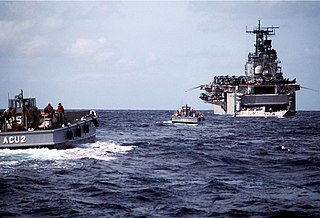 W
WOperation Sharp Edge was a non-combatant evacuation operation carried out by the 22nd Marine Expeditionary Unit and 26th MEU of the United States Marine Corps in Liberia in 1990 and 1991. The MEUs were supported by Amphibious Squadron Four composed of USS Saipan, USS Ponce, USS Sumter, USS Barnstable County, USS Peterson, and Fleet Surgical Team TWO.
 W
WOperation Shining Express was the June 2003 deployment of an American naval task force, consisting of the amphibious assault ship USS Kearsarge (LHD-3) and the 3rd Battalion 2nd Marines (3/2) to rescue U.S. embassy personnel and American citizens during the Second Liberian Civil War. The deployment was announced on June 12, 2003 and lasted until July 2003.
 W
WOperation Silver Wake was a non-combatant evacuation operation (NEO) led by the United States to evacuate American citizens, noncombatants and designated third country nationals from Albania in March 1997. The operation was performed by U.S. Marines from the 26th Marine Expeditionary Unit conducting operations from the USS Nassau Amphibious Readiness Group. U.S. Marines from 1st Battalion, 8th Marines secured the U.S. housing compound and held the U.S. Embassy. Over 900 personnel were evacuated during the course of the operation.
 W
WOperation Steel Box, also known as Operation Golden Python, was a 1990 joint U.S.-West German operation which moved 100,000 U.S. chemical weapons from Germany to Johnston Atoll.
 W
WOperation Support Hope was a 1994 United States military effort to provide immediate relief for the refugees of the Rwandan genocide and allow a smooth transition to a full United Nations humanitarian management program. The inhabitants of the camp consisted of approximately two million Hutus, participants in the genocide, and the bystanders, who had fled Rwanda as the predominantly Tutsi Rwandan Patriotic Front took control of the country. On July 22, 1994 President Clinton announced Operation Support Hope. Two days later, American joint task forces were airlifted to Goma, Zaire; Kigali, Rwanda; Entebbe, Uganda; and Mombasa, Kenya. US Air Force liaison officers were assigned to United Nations High Commissioner for Refugees (UNHCR)'s air operations cell in Geneva and assigned to joint logistics cells and civil-military operations centers in the field.
 W
WOperation Tomodachi was a United States Armed Forces assistance operation to support Japan in disaster relief following the 2011 Tōhoku earthquake and tsunami. The operation took place from 12 March to 4 May 2011; involved 24,000 U.S. servicemembers, 189 aircraft, 24 naval ships; and cost $90 million.
 W
WOperation Unified Assistance was the American military's humanitarian response to the 2004 Indian Ocean earthquake and tsunami. On 28 December 2004, elements of the Combined Support Force were deployed to U-Tapao International Airport in Thailand. More than 12,600 Department of Defense personnel were involved in the relief effort.
 W
WOperation Unified Response was the United States military's response to the 2010 Haiti earthquake. It was conducted by Joint Task Force Haiti and commanded by United States Southern Command (USSOUTHCOM) Military Deputy Commander Lieutenant General Ken Keen, although the overall U.S. government response was headed by Rajiv Shah, administrator of the United States Agency for International Development (USAID).
 W
WThe Warsaw Airlift was a British-led operation to re-supply the besieged Polish resistance Home Army (AK) in the Warsaw Uprising against Nazi Germany during the Second World War, after nearby Soviet forces chose not to come to its aid. It took place between 4 August and 28 September 1944 and was conducted by Polish, British, Canadian, Australian, New Zealand and South African airmen flying from Celone and Brindisi in Italy and denied flyover rights from their Soviet allies, who shot at them when the planes entered Soviet airspace. On 18 September, in the final stages of the Nazis crushing the uprising, one United States airdrop was launched from Great Britain and landed at Poltava in Soviet Ukraine as the distance to the drop-zone precluded the aircraft returning to base. The flights from Italy were night operations with low level cargo drops, conducted without fighter escort while the single United States Army Air Forces mission of 18 September 1944 was a high-altitude, daylight operation consisting of 107 B-17s protected by P-51 fighters. From the night of 13/14 September, Soviet aircraft flew some supply drops, dropping about 130 tons in total until 27/28 September. Initially, this cargo was dropped without parachutes, resulting in much of the payload being damaged or destroyed.
 W
WOperation Whitecoat was a biodefense medical research program carried out by the United States Army at Fort Detrick, Maryland between 1954 and 1973. The program pursued medical research using volunteer enlisted personnel who were eventually nicknamed "Whitecoats". These volunteers, all conscientious objectors, including many members of the Seventh-day Adventist Church, were informed of the purpose and goals of each project before providing consent to participate in any project. The stated purpose of the research was to defend troops and civilians against biological weapons and it was believed that the Soviet Union was engaged in similar activities.